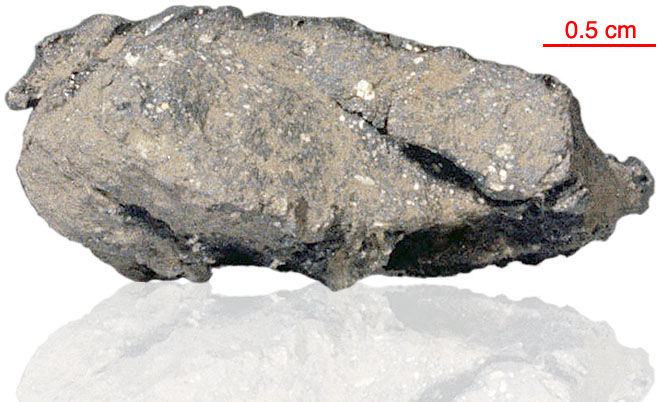
Fact sheet
15269 is a glassy regolith breccia with a vesicular glass coat. It is tough, greyish black, and prismatic or angular. The contact of glass coat and glassy breccia is locally sharp, but elsewhere they grade, either rapidly or through a porous, sintered zone. The appearance is of melted breccia, not splash glass. 15269 is a very glassy, coherent, foliated regolith breccia. It contains abundant colorless glass shards. Lithic clasts are generally small, and include fine- grained feldspathic impact melts, as well as anorthositic materials. KREEP and mare basalt fragments are not conspicuous. The glass coat is vesicular and extremely heterogeneous, containing clasts. In thin sections the contact with underlying breccia is quite sharp but irregular. Rotations show lithic clasts, mineral clasts and glass.
The sample weighed 6 grams before analysis and has not been dated.
Further details of this and other Apollo samples are here: http://curator.jsc.nasa.gov/lunar/
The Apollo 15 landing site was in the Apennine Highlands, and close to Hadley Rille — a long, narrow winding valley. Approximately 76 kg of lunar material, including soil, rock, core-tube and deep-core samples, were returned to Earth.
This mission was the first flight of the Lunar Roving Vehicle which allowed the astronauts to venture further from the Lunar Module than in previous missions. During three periods of extravehicular activity, or EVA, on July 31st, and August 1st and 2nd, Scott and Irwin completed a record 18 hours, 37 minutes of exploration, travelling 17.5 miles, in the first car that humans had ever driven on the Moon.
Apollo 15 was launched on 26 July 1971.






